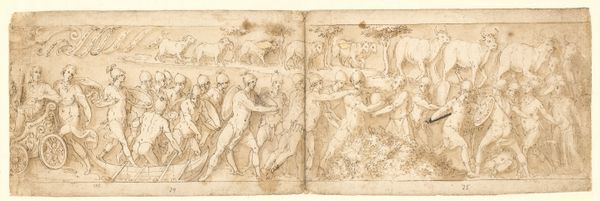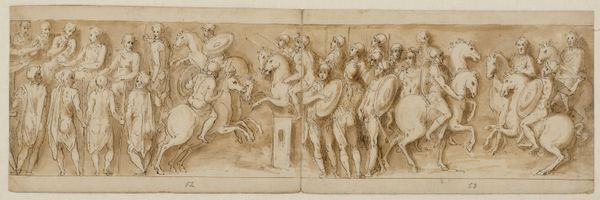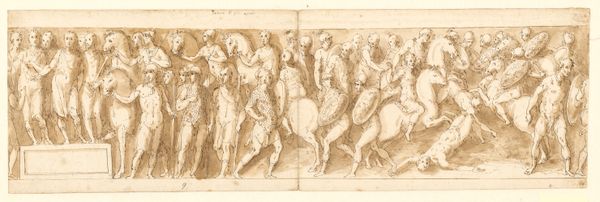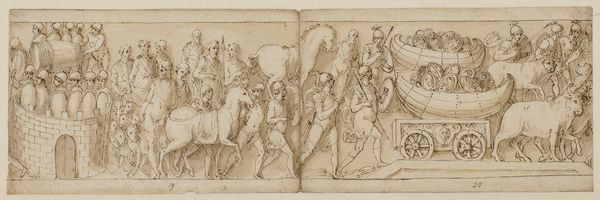
32 kopier efter Marcus Aurelius-søjlen, Piazza Colonna i Rom 1544 - 1618
0:00
0:00
drawing, paper, ink
#
drawing
#
figuration
#
paper
#
11_renaissance
#
ink
#
history-painting
Dimensions: 133 mm (height) x 432 mm (width) (bladmaal)
Editor: Here we have Giovanni Guerra's "32 Copies after the Column of Marcus Aurelius, Piazza Colonna in Rome," created between 1544 and 1618 using ink on paper. The composition strikes me as a frieze, dense with figures and animals. How do you interpret this work within its historical context? Curator: This drawing offers us a vital link to understanding Renaissance artistic practices and their relationship to power. Guerra's meticulous copies aren't simply reproductions; they are acts of interpretation, appropriation, and, arguably, subtle subversion. What stories do you think the Marcus Aurelius column originally told, and whose voices were amplified versus silenced? Editor: From what I know, the column commemorated Emperor Marcus Aurelius's military campaigns. So, undoubtedly, it’s a triumphal narrative. Curator: Precisely. Guerra, by meticulously copying these scenes, participates in a dialogue about Roman imperial power at a time of intense political and religious upheaval. How might his Renaissance audience have viewed these images of military dominance, especially considering the era's power struggles? Do you think the choice to draw on paper affects its perception as less grandiose, and less of an outright expression of power? Editor: I see what you mean. Reproducing this massive monument as a drawing domesticates its original message. And viewing it now allows us to rethink the narrative that the column originally offered. Curator: Exactly. And if we consider the artist’s choice of medium—ink on paper—how might the fragility and portability of the drawing challenge the monumentality and permanence the original column sought to convey? Guerra allows us to dissect, reassess, and question that imperial narrative. Editor: That's fascinating. I never considered how the medium itself could be such a powerful commentary. Thanks for highlighting these intersectional viewpoints. Curator: It’s important to constantly engage with these layers, revealing the dialogues art invites across centuries. There is so much that older artwork can teach us about our contemporary moment.
Comments
No comments
Be the first to comment and join the conversation on the ultimate creative platform.













